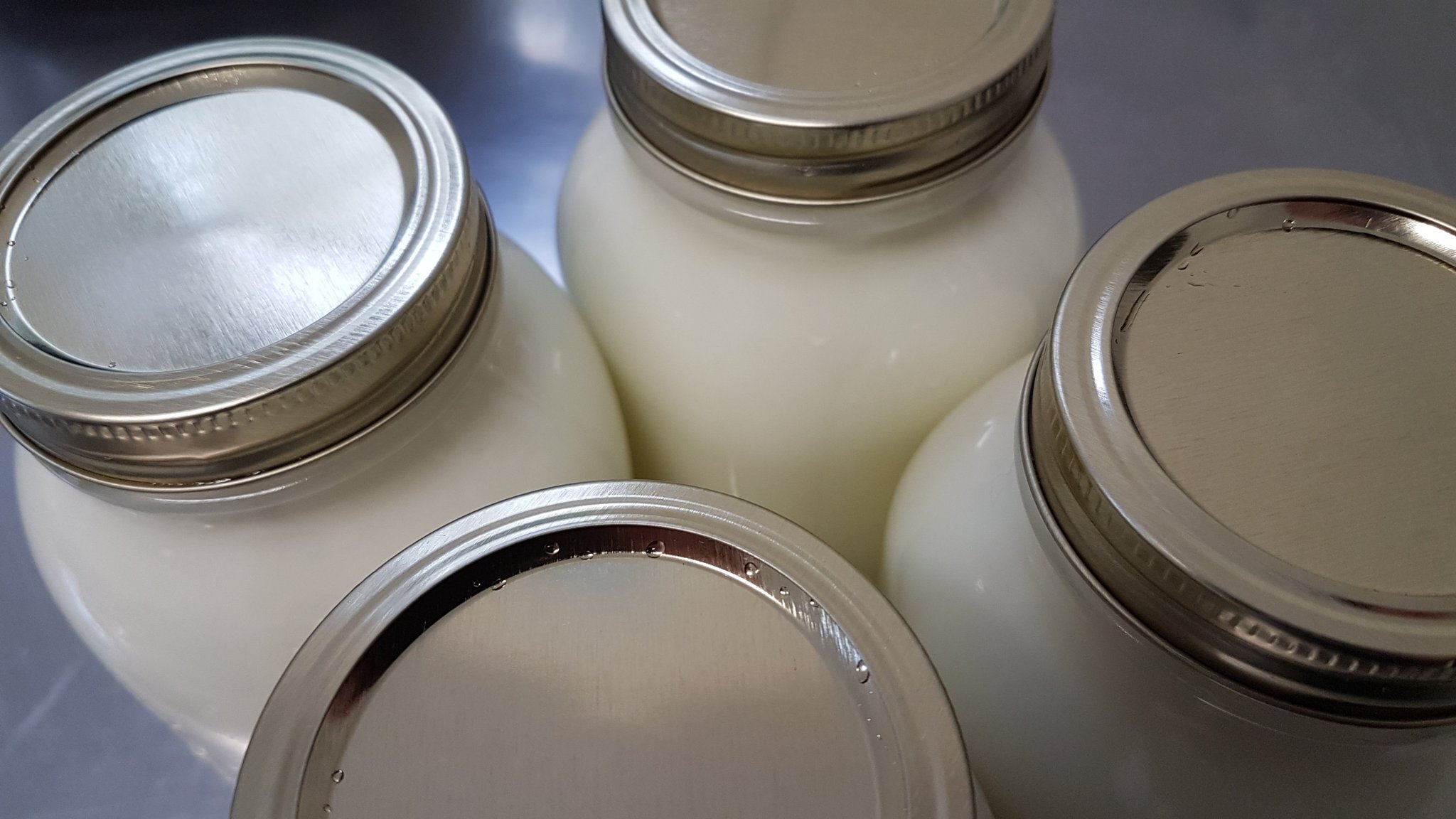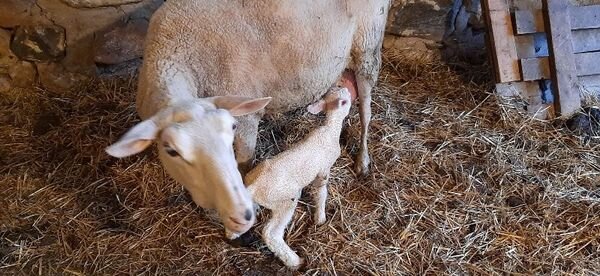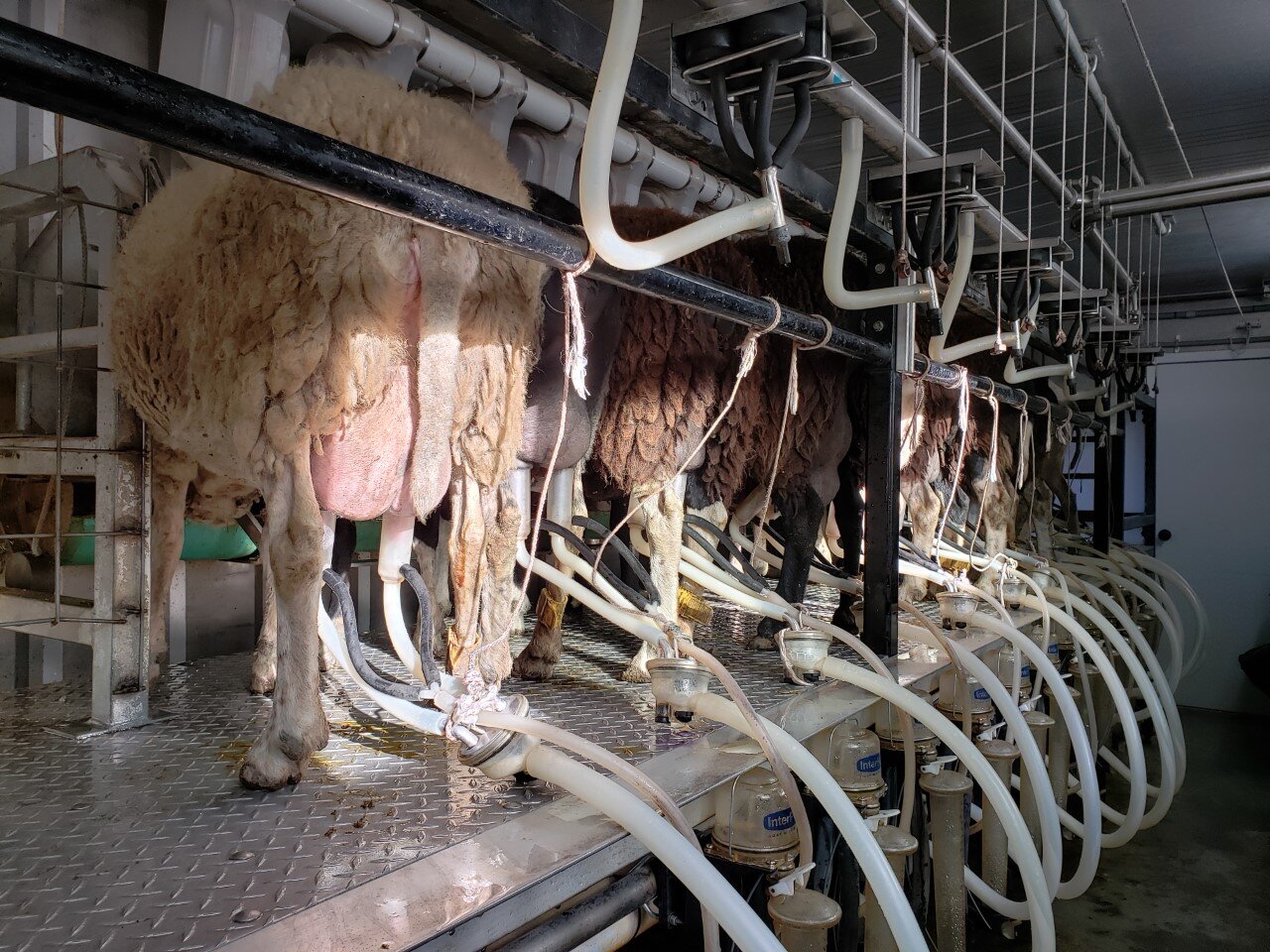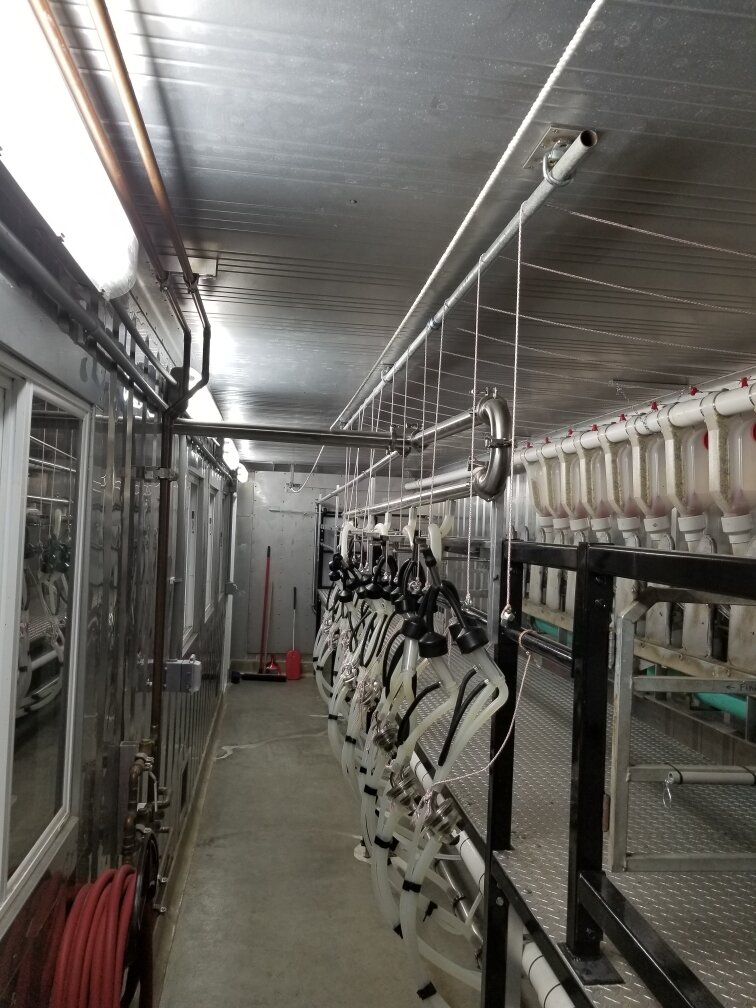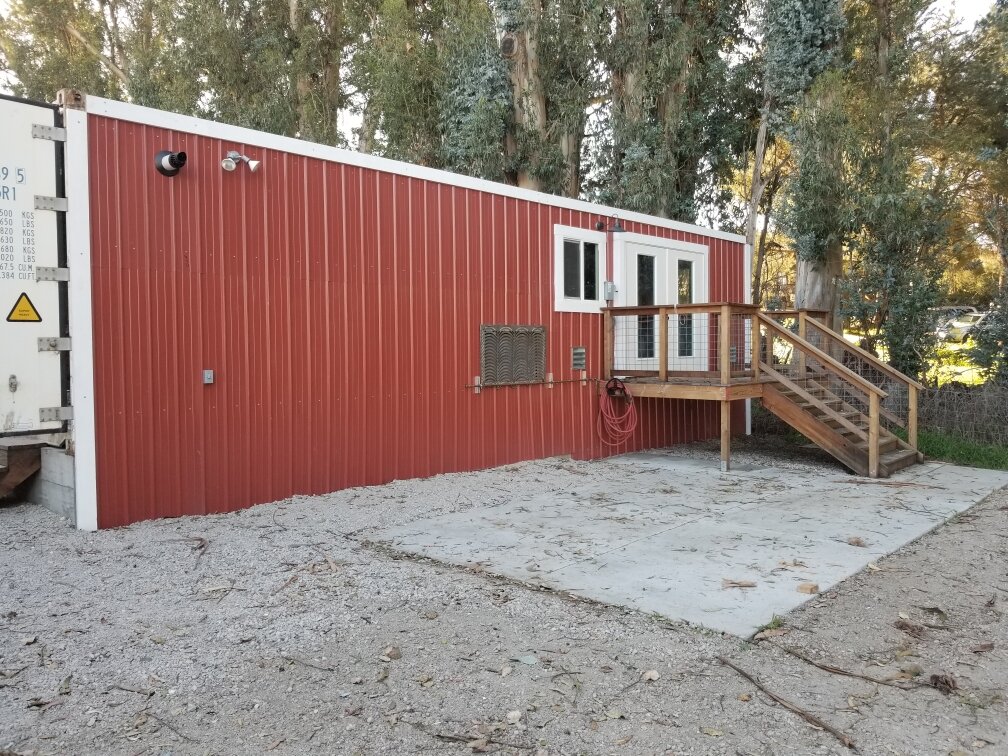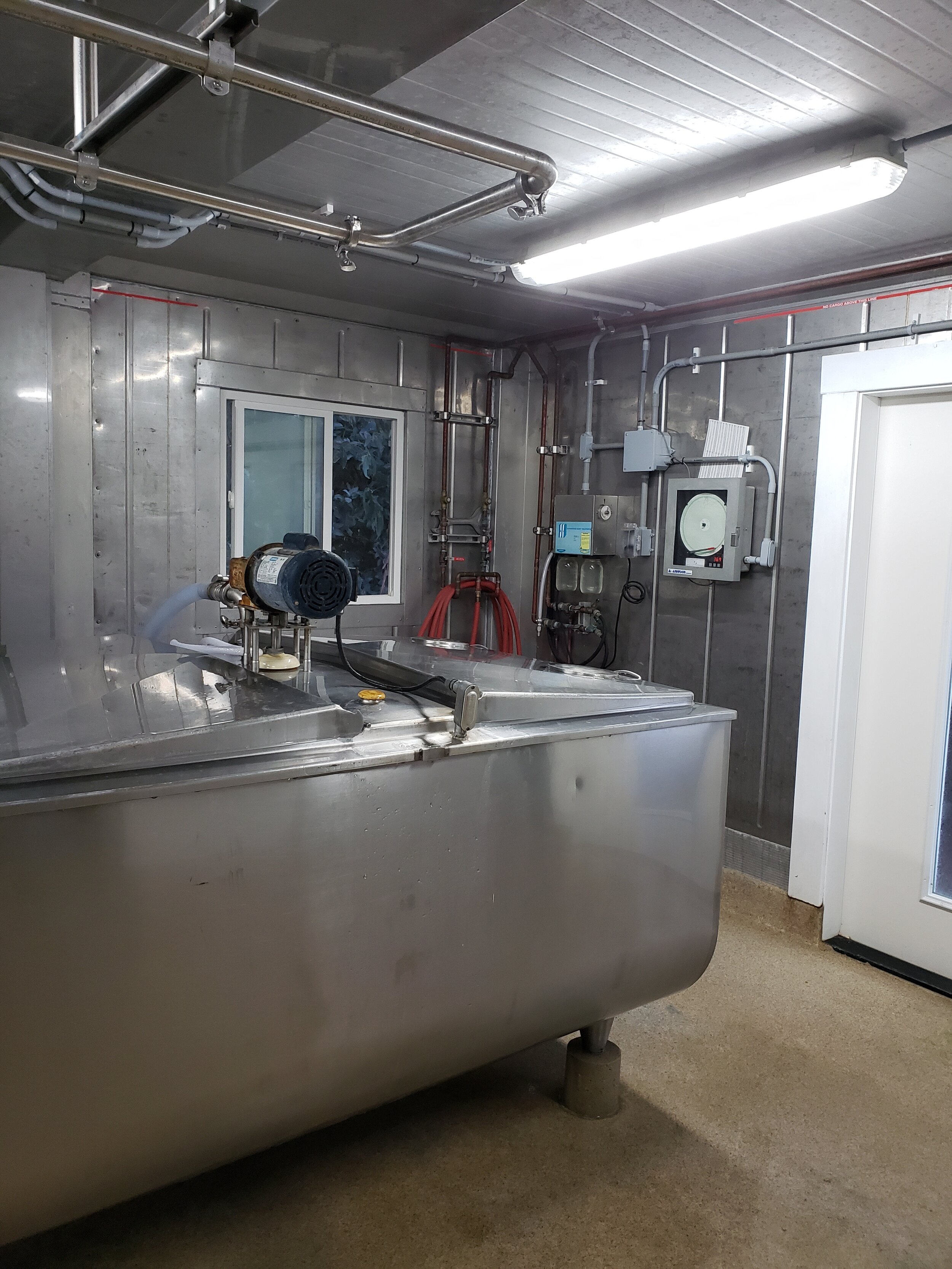Meet some of our DSANA members and get an inside look at how they operate. This is also a great place to pick up tips for starting out or improving your own processes. We’ll be continuing to add new producer profiles to this page, so keep checking back to learn more about what other dairy sheep producers are doing.
Membership in DSANA is required to view this content. Want to have a look? Join us today! Already a member? DSANA members can login below.
Marketing from a Different Angle
All Sorts Acres Farm
By Terry Felda, Tin Willows Farm, Oregon USA, and Bee Tolman, Meadowood Farms, New York USA
The first thing I noticed about All Sorts Acres Farm in Ontario, Canada was their tag line: “All Sorts Acres: Where Art, Agriculture, and Ecology Meet”. It so describes my own farm that I was sorely disappointed that I hadn’t thought of it first!
The second thing that caught my attention came during the conversation Bee Tolman and I had with co-owner Jennifer Osborn. We really wanted to focus on their farm business model, and how that model is reacting to a changing world. Jennifer’s answers were not the norm in the sheep-milk product world, and surprised us both.
Jennifer and her husband Tim Fisher currently milk 24 head on 50 acres and want to top out at 30 milking ewes. They run a pasture-based operation with 14 acres of grazing and 18 acres for hay. They started the farm in 2007 with fiber sheep and on-farm wool processing. They then bought two East Friesian ewes which they milked with an Udderly Easy milker; their first sheep milk product was gelato processed in a rented commercial kitchen.
The return and profit on gelato and other sheep-milk products seemed so promising that Jennifer and Tim decided to take the plunge, and in 2015 took out a loan to buy a farm that already been milking sheep, and had an parlor and milking room. Then, because sheep milk isn’t considered “milk” in Ontario, they were able to easily build a 10’x12’ commercial kitchen in their house to process their sheep milk products. All Sorts Acres Farm’s business model now emphasizes dairy sheep and sheep-milk products: dairy and meat account for 70% of the farm’s income while wool and art/agritourism make the remaining 30%.
Jennifer and Tim’s dairy product line has changed in the last two years, driven by the Covid lockdown and the subsequent change in markets. In 2019 the gelato was their big seller through restaurants, farmers markets, and events. In 2020, as in the rest of North America, Ontario’s restaurants, events, and farmers markets were shuttered, so Jennifer and Tim turned to home deliveries of orders placed on their website. They already had an online store and an active social media presence, so the pivot to online sales was easy. Bottled milk, soft cheeses, and kefir/yogurt became their primary products.
One unforeseen upside of the change from farmers markets to online sales and home deliveries is that Jennifer and Tim are no longer trying to predict – or guess! – what customers might want each week and then predict or guess what they should produce and pack for the farmers markets. With on-line orders and home deliveries, they can produce in response to orders, and deliver what customers want. The stress of preparing for, traveling to, setting up, and selling at the market, followed by the clean-up and travel home, has been eliminated. Now Tim travels into Toronto early once a week, makes his deliveries before heading to his off-farm job.
The “wow” moment for me came when Jennifer started talking about All Sorts Acres Farm’s dairy product line and their focus on staple foods. Jennifer and Tim have chosen to produce dairy products that appear most accessible to the most customers. Jennifer says that she and Tim “are not cheese aficionados” and do not aspire to make high-end artisanal cheese. Instead, they produce cheese that as Jennifer said, “stays in the refrigerator and is the one you reach for to make a kid’s sandwich, cut a slice to eat, add to the mac and cheese. It’s always there. Creamy, but not too salty or too strong. Basically, Tim loves farmers cheese, and so if Tim likes it, it’s perfect.” They make cream cheese and cheese curds because their customers already know what those are. Jennifer likens it to the average person going into an art gallery: most people believe they don’t know enough about art to understand, recognize, or appreciate the art they’re viewing. When it comes to dairy products, Jennifer and Tim want to meet people where they’re at.
Wow.
Jennifer and Tim have decided to minimize inputs as well. The farm is designed to be run with 1.5 people. Sheep are milked once a day and the lambs stay on for six weeks. All Sorts Acres ewes are milked only in the summer; additional milk is purchased from Axel Meister at Wooldrift Farm in the off-season. Jennifer and Tim are not trying for maximum production. They would rather not pay for additional labor, and prefer to focus on the processing and marketing activities that add value to their products.
Like most seasonal dairy producers, Jennifer and Tim have found that maintaining an even and steady cash flow is their biggest challenge. Jennifer believes the answer lies in identifying an enterprise that fits around their seasonal farming and processing schedule, represents a good business opportunity, requires minimal capital investment, and capitalizes on the skillsets they already have. Jennifer is looking to agri-tourism with an emphasis on fiber arts to be the enterprise that will even out their seasonal cashflow at All Sorts Acres, and mesh well with the farm’s operations and routines.
For those just starting out in the sheep dairy business, the Jennifer and Tim have three pieces of advice:
Have a business plan. Use it to make your mistakes on paper, before committing money and time to them. Jennifer and Tim changed packaging and ingredient plans and costs after trying them out on paper first.
Have a backup plan. If the pandemic taught us one thing, it’s that things don’t always go as planned.
Don’t make your plan “I can do it myself”. You can’t do everything. Pick your projects to match the skills and opportunities that are unique to you and your farm.
Thinking Inside the Box
rd
By Becca Matthews
Hidden Hollow Ranch, DSANA board
“If our daughter hadn’t shown an interest in showing sheep, we wouldn’t have a sheep dairy,” says Shanley Mansour of Lambs Hill Dairy in Sonoma County, California.
Sound familiar? Maybe it wasn’t a daughter, or son, but a niece or nephew, or cousin, or wife or husband, that decided they wanted sheep for showing, or wool, or milk, or just to eat the weeds in the yard. Whatever the reason, the answer is usually along the same lines; and from there come the dairy sheep.
But with dairy sheep comes the need for a dairy barn. Most people repurpose an old building or build one from scratch. At Lambs Hill, however, they use shipping containers – three repurposed, refrigerated shipping containers that house a 12-straight pipeline milking system and related equipment. It’s an out of the ordinary but practical choice for Andre and Shanley Mansour, who have been selling milk for three years to a local creamery and are presently milking 103 East Friesian, Lacaune, and Icelandic crosses.
The Mansours bought their dairy flock before building their dairy and were pressed to complete their buildings prior to lambing. “We thought that containers would be a faster build process than a conventional barn,” Shanley says. “We decided to do containers, as we had seen a couple of creameries using containers, though not for dairies.”
The dairy is made up of three shipping containers, (1) 8’x20’ and (2) 8’x40’; and they are 9’ tall, rather than most that are 8’. The Mansours use one container as the parlor, one as the mechanical room, and one as the tank room. The sheep walk up low-rise stairs (instead of a ramp) over a bridge to enter the parlor. Once they finish milking, they walk down another set of low-rise stairs to ground level. The Mansours are currently milking 12 head at a time on an aluminum diamond plate milking stand, but have room to expand to a 20-head stanchion if/when they decide to do so.
The containers are set up in a U shape and Shanley says that "the tank room is large enough to add creamery equipment if we ever decided to expand into a creamery.” The containers are refrigeration containers which are harder to find than a regular shipping container and typically cost more. Shanley says this is because “they are fully insulated and are completely stainless steel inside with aluminum ceilings. Our cost was $5,000 each, not including delivery.”
As with anything, there are pros and cons to using shipping containers for a dairy. Shanley was kind enough to explain what she likes and doesn’t like about them and how she and her family have overcome some of the cons.
She says the biggest pro of the containers is that they are completely insulated, with stainless steel interiors. “The stainless steel is the best part because the walls can be hosed down.” They added windows and doors, concrete floors and coving, which was needed to complete the inside prior to dairy install.
“We chose to put our containers on concrete pillars raised four feet off the ground to make it easier to get to plumbing,” Shanley says. “To do this, our containers needed to be lifted by crane onto the supports.” Another pro is the flexibility of the containers being movable. “If we wanted to move our dairy, we could move our containers pretty easily and reinstall them on another site.”
Shanley told me that the cons are not necessarily the containers themselves, but how theirs were configured. “Once the sheep come into the milking parlor and put their heads into the stanchions, we cannot see them. This makes it impossible to check the front of your sheep.” They also have incorporated ankle tags to track production since they are unable to see ear tags on the sheep. “It would be so much easier if we could get to the front of them, but then we couldn’t have the auger feeding system so we can’t complain.”
Shanley says if they had to do it all over again they would still opt for the shipping containers but make it so they could walk all the way around the sheep when they are in the stanchions. “Another consideration with containers to note: decommissioned containers often have leaks and large dents that may not be suitable for all projects. We inspected ours prior to having them delivered. We would not purchase sight unseen."
More photos of the Mansours' containers can be found on the DSANA Flock Management Forum. If you have any questions for the Mansours you can post them there.
Habitat restoration on tin willows sheep dairy
By Christen Waddell
Terry Felda runs Tin Willows Sheep Dairy and Ranch in Ione, Oregon. She grazes her sheep on pasture and sells milk to Black Sheep Creamery. In 2019, she also started bringing in campers through Hipcamp. Almost every day she has campers that participate by helping with milking, feeding lambs, and collecting eggs.
The first part of her video shows what her farm looks like - a lot of open space, about 450 acres, in the high desert of eastern Oregon. The climate is very dry, and you can see that in the vegetation. Although her sheep have a multitude of acreage to graze, the desert forage isn’t the rich grass that would benefit their milk production. Terry has been working with MsJandCo to introduce Assaf sheep into her flock, which she believes will perform better in her environment. Her original sheep flock was comprised of a mix of American Diary sheep that were more adapted to lush pastures. The Assaf have been historically bred for climates that look like hers, and she hopes that they will be able to graze more efficiently on the desert forage than her current sheep.
Given that the surrounding environment is so dry, water is precious here, and Terry is doing what she can to help ensure the health of the 1.5 mile stretch of Willow Creek that runs through her property. In her video, Terry shows one of six beaver dam analogs that she has built on the creek to help widen the riparian stream and prevent erosion. Beaver dam analogs are man-made structures that mimic a natural beaver dam. These structures create areas of the creek with lower water velocity and lessen the steepness of the creek banks, providing better habitat for shrubs and trees to grow and encouraging higher biodiversity. She is also planting around 1,700 native plants along the creek bank to help control erosion as well as cool the creek to encourage the return of native fish. These plants will include species such as elderberry, aspen, and cottonwood that provide food for people, wildlife, native pollinators, and honeybees. She also plans to use this area as a showcase to encourage her neighbors on Willow Creek to join in the effort to restore this delicate habitat.
I asked Terry how she thought the creek restoration would affect her dairy, and she told me that it really goes back to the goal of her farm, which is self-sustainability. Improving the environment around her will make for a better farm overall. The creek restoration will support more native pollinators. Those pollinators will improve the quality of her pastures. Better pastures will provide her (now more efficient) sheep with what they need to produce a lot of high quality milk. “It all goes hand in glove,” says Terry.
Milk a Sheep Camp in Eastern Oregon
By Terry Felda
Tin Willows Sheep Dairy
I got started with Hipcamp in 2019 after a recommendation by Lynn at Glendale Shepherd. I went to hipcamp.com -- a website where people can book campsites hosted by ordinary people -- and I listed a “Milk a Sheep Camp.” Sounds pretty easy doesn't it? And it was. Even for me, in a location frought with Internet dysfunction, and my lack of patience with such, Hipcamp made it easy and walked me through it.
But many locals scoffed when I said I was opening up my Oregon sheep ranch and dairy for campers. "Who's going to come to your place?" was the general attitude. On the other hand, every single visitor to my farm has encouraged me to find a way to bring in paying guests. "Portland would pay big money to come here, look at those stars!" is what they say.
Perhaps I should describe my place a little. It’s 450 acres in the middle of Not Much, Morrow County, Eastern Oregon. There is a creek and a highway that runs through it. Most days, the creek generates more traffic in the form of birds and wildlife than the highway does trucks and cars. It's all brown sandy bluffs and little shade. And virtually everything on the farm has been built by me from recycled bits of this and that. I've never thought it was anything all that special. I've only seen the things not done.
What it does have, in abundance, is space. And quiet. And peace. And that, even before this pandemic world we now live in, has value. It is space that most only dream about. Enormous blue clear skies, rolling hills, and vistas that span miles. And no people. There are 12,000 in this county. We have more sheep and cows than people. Probably more pickups, too.
So I listed my little dusty farm on Hipcamp and waited to see what would happen. Frankly, I agreed with the locals. No one would come.
But in 2019, some did. A few. It was fun and yet oddly weird having guests who I wasn't treating like family. I didn't invite them over for dinner, that kind of thing. I did, however, offer coffee every morning. And it was easy money. I didn't have to do a thing besides be welcoming. There was no outhouse, and people used the garden hose for water. The most I had to do was move a picnic table a hundred feet and then back again.
Kids bottle fed lambs. One family helped sort 100 lambs. Others just relaxed by the tent and reveled in the quiet. All marveled at seeing so many stars.
Enter 2020 and the pandemic. Hipcamp honored all shelter-in-place orders, so I didn't have campers until ours were lifted. And then my phone started blowing up. The first weekend I had 14 people onsite. 14! Locals were driving by just to see the tents because they didn't believe the stories. It hasn't slowed down since. It isn't going to anytime soon, either. Every camper has told me this is their new way to travel. I expect to be just as busy this year.
I never managed to have Black Sheep Creamery in Washington state send me cheese to sell to the guests. But people want to try what we're selling. So I offered coffee around the fire every morning (or at the picnic table later in the summer), with samples of raw milk and yogurt. Guests can buy both if they want. Holy cow. Now almost every single review of my place on Hipcamp talks about the holy grail of coffee, sheep milk, and sheep yogurt. It's been a massive hit. This year, the shelves will be stocked with my honey, Black Sheep cheese, yogurt, duck eggs, and processed duck and lamb.
Campers pick where they want to camp. I encourage everyone to get out, walk around, and see what feels right. "Yes, you can camp in the field with the sheep. In the morning, they'll run right by your tent on the way to the barn." Or they camp with the horses. Or in the lamb lot. Which is tremendous fun, most of the time. Guests get a thrill out of having horses or sheep so nearby.
But animals are animals, and sometimes horses can paw a hole in a tent or kick over a lawn chair. So I am clear on what can happen before tents are set up. So far, everyone has been completely understanding and thrilled to be able to tell a good story about this wonderful place in eastern Oregon.
And without exception, every visitor has been courteous, curious, and thrilled to be on my farm. They have kept their sites immaculate and the outhouse has been treated well. They love seeing ducks and guineas roam freely in and out of the lamb pens, dogs lazing around waiting to be adequately admired, lambs that walk up like demanded pets. Even adults want to bottle feed lambs. They are stunned to see all the stars at night and even the wind doesn't bother them.
Some ask questions about my deciding to become a farmer, making it on a small farm, or about agriculture in general. I don't sugarcoat anything. Lambs die, the pandemic means I'm taking a serious hit on my market lambs, and I don't regret a thing. Most want to help milk sheep and are fascinated by the process.
As for the bad, signage would probably be a good thing. I'm working on it. I'm continuously amazed by how many kids can't climb over a gate. I use that as a kind of gauge of what kind of kids (and parents) I got this time.
And not everyone knows what things are used for on a farm, of course. Your mineral feeder with the black poly-something tub filled with minerals? It looks like a fire pit to some people. I swear to God. So when you see them moving it? Ask them why. Before they melt it.
My guests don't see what I see: a few untidy piles of stuff, wheelbarrows not lined up like soldiers, a farm on the edge. They see a hardworking female farmer milking sheep and creating an amazing space out of thin air. They see an incredible house built out of recycled materials and pallets, flowers on the ground, and stars in the sky. They see the best of what I do and did. And I thank them for it, because it's helped me see it, too.
Terry Felda is the owner/operator of Tin Willows Sheep Dairy Ranch, where she is milking 50 ewes this year as she introduces Awassi sheep into her flock through artificial insemination. She is a member of the DSANA board.
Lambing Prep at Hidden Hollow Sheep Dairy
By Christen Waddell
Becca Matthews and her husband run Hidden Hollow sheep dairy in Idaho. Before the cheesemaking and the milking come the lambs. The normal lambing season at Hidden Hollow is January 1st-March 31st. This year, however, they are trying year-round breeding. They will breed smaller groups in January and May, and the biggest group in August and September. Successful lambing is critical to a dairy operation, and Becca shares some of her tips for keeping everyone healthy with us.
A healthy ewe is vital to healthy lambs, especially during the gestation stage. During this integral time, Becca brings the ewes into the barn and runs them through a chute system to make sure that everything is going as planned and to check the body condition scores and hooves of all of the ewes. The ewes that are 30 days out from lambing get vaccinated with Covexin 8, drenched with ivermectin, and marked for identification. The ewes that she delegates to be close to lambing have their udder checked for lumps, heat, or any other abnormality. Then all of the ewes are turned back out on pasture.
A week prior to the start of each lambing group’s first due date, those ewes are brought into the barn where they are fed a mix of corn silage and alfalfa hay. The ewes are also crutched to give the lambs better access to the udders. After all of this careful preparation, it’s finally time for lambing to begin.



